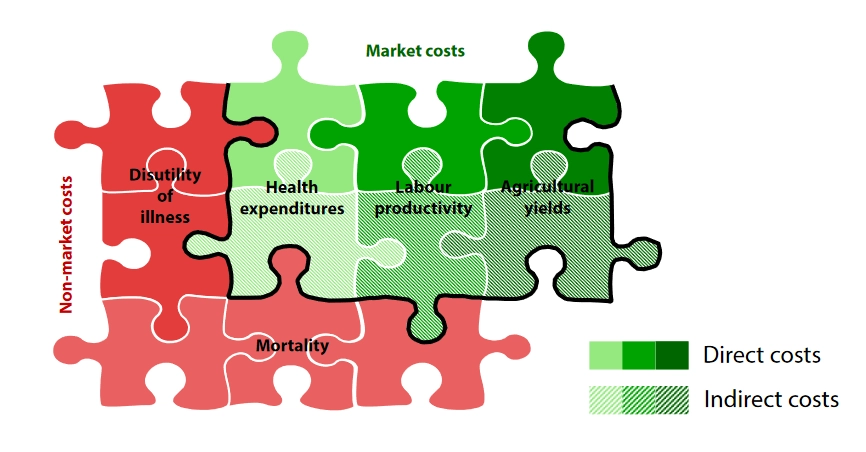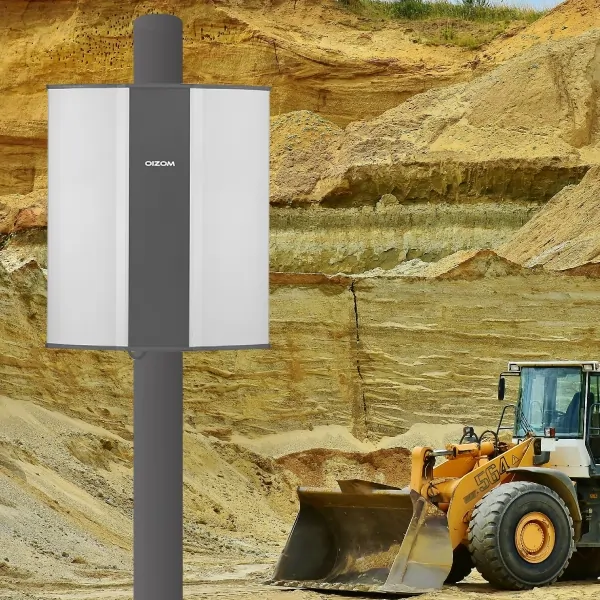Air pollution is not just polluting our landscapes, it is costing us real money. A study by the Center for Research on Energy and Clean Air and Greenpeace found that air pollution is creating a global economic burden of about USD 2.9 trillion every year. For India, this figure is about USD 150 billion, erasing 5.4% of our GDP every year to air pollution-related costs.
Such a tremendous economic cost clearly suggests that our current economic practices are getting unsustainable – not only environmentally, but also economically. We need a paradigm shift to reduce the economic burden that we bear due to increasing air pollution.
Oizom helps you relieve that economic burden with smart environmental monitoring and analytics. Air quality monitors such as Oizom’s PolludroneTM helps businesses, governments and communities in understanding and defining their unique air pollution problem.
This understanding also enables us in quantifying various economic costs caused by air pollution. Such a data-driven approach provides the opportunity to reduce the economic burden of air pollution.
IMPROVING PRODUCTIVITY
Various studies around the world have shown that exposure to polluted air leads to poor productivity at work. Breathing such polluted air for prolonged periods of time develops various cardiovascular (related to the heart), pulmonary (lung), and neurological (brain) diseases.
In mild cases, it impairs cognitive and decision-making abilities. As a result, even simple and well-established tasks may take a longer time and more people to complete.
If exposure is continued, such mild cases result in an increased number of sick leaves. Exposure from air pollution accumulated over the years develops in a chronic disease, which requires continuous medical attention and management (medication and therapy).
Investment in air pollution mitigation pays back with improved productivity, reduced medical bills, and hospitalizations. Oizom worked with JCB and Devic Earth to significantly improve the working conditions of employees working at a manufacturing plant by reducing their exposure to harmful air pollutants.
If exposure is continued, such mild cases result in an increased number of sick leaves. Exposure from air pollution accumulated over the years develops in a chronic disease, which requires continuous medical attention and management (medication and therapy).

Investment in air pollution mitigation pays back with improved productivity, reduced medical bills, and hospitalizations. Oizom worked with JCB and Devic Earth to significantly improve the working conditions of employees working at a manufacturing plant by reducing their exposure to harmful air pollutants.
IMPROVING NATIONAL ECONOMIC OUTPUT
According to a study published in The Lancet Planetary Health journal, 1.7 million deaths were attributable to air pollution in 2019, which is around 18% of all deaths in India. What we can also infer from the study is that air pollution is a major cause of reducing the life expectancy of Indians.
These are not just reductions in some abstract numbers, it also shows the loss in all the economic activity that is lost along the way. It is the loss of productive participation in the economy.
It creates a huge economic burden on national GDP by loss in the workforce, reduced economic output, and continuously mounting health and welfare costs to the government.
As a large portion of Indians lives in areas with air pollution, it is very important first to take measures to reduce their pollution exposure. Investment in monitoring technology enables local governments and officials in taking timely action.
It is not an investment just to reduce economic costs, it is an investment for the future. Healthy and productive populations will work efficiently and earn more. They will be able to participate in the strengthening of the national economy.

On a similar project, Oizom partnered with Gandhinagar City for the overall environmental monitoring of the city. Such a data-driven approach facilitates the development of sustainable cities with a healthy environment for their people.
AIR POLLUTION DAMAGE ON ECOSYSTEMS
Agricultural damages caused by air pollution contributes a large portion to the overall economic burden. Air pollution has the potential to severely damage crops, leading to a significant reduction in farm yields. It increases prices in the whole food chain.
Just like its impacts on humans, air pollution also critically impacts various ecosystems and their normal functioning. It affects not only how we get food, but also increases our water purification costs, disrupts plant growth and leads to higher economic costs for all the raw materials that we get from nature.
It is clear that the economic burdens that air pollution is causing will hamper our development as a society. Our efforts to reduce the economic burden will not only generate profit but will also help us in building a sustainable, healthy and productive economy that is resilient to the challenges of the future.
FAQs
Due to respiratory issues it might causes and air pollution can have a major impact on productivity. Also, farmers and the agricultural industry could face financial losses if their crops are harmed by pollution.
Improving public health, raising productivity, and creating a more sustainable environment are just some of the long-term advantages of reducing pollution levels. Future generations will be happier and more wealthy if we take action now to reduce pollution.
Damage to infrastructure, higher costs related to responding with natural disasters, and decreased yields from agriculture are all examples of methods in which air pollution may have a negative impact on the economy. To reduce or adjust to these effects, a lot of money will be needed.
Air pollution impacts the economy by increasing healthcare costs, reducing productivity, and causing environmental damage. It leads to higher medical expenses, decreased work performance, and economic losses in sectors such as agriculture.
Yes, air pollution can lead to increased healthcare expenses. Exposure to polluted air increases the risk of respiratory and cardiovascular diseases, requiring medical treatment and contributing to higher healthcare costs.






